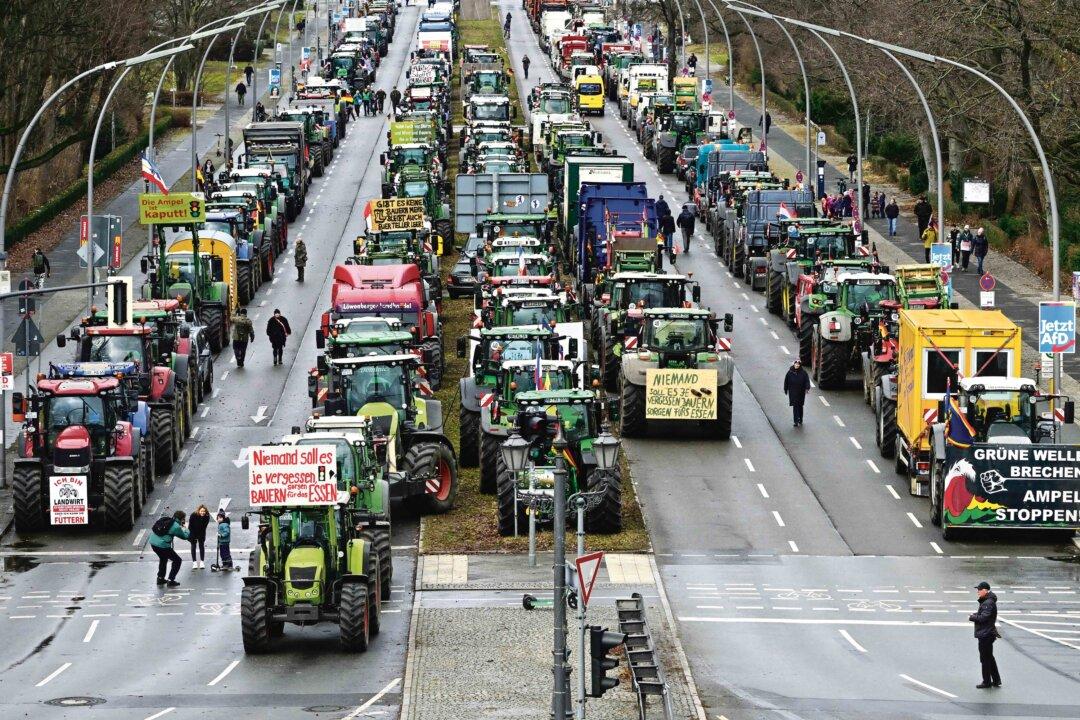BERLIN—It’s freezing cold this evening on a hilltop in Thuringia, about 170 miles south of Berlin, but the atmosphere is warm. Micha Engelhardt is there with his tractor beside the bonfire on this cold January day, and there are sausages and pumpkin soup.
The village has three farmers, and all of them are here. But that’s not all—more than expected have shown up. There are tradesmen, truck drivers, the local carpenter, the village butcher, families, even the mayor. The police stop by, nod, and drive off again.
